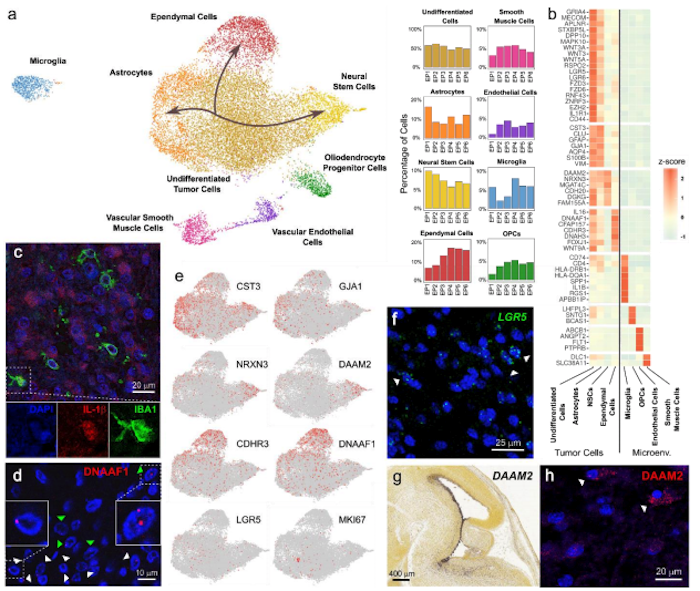Cell Ecosystem and Signaling Pathways of Primary and Metastatic Pediatric Posterior Fossa Ependymoma

Abstract
Pediatric ependymoma is a devastating brain cancer marked by its relapsing pattern and lack of effective chemotherapies. This shortage of treatments is partially due to limited knowledge about ependymoma tumorigenic mechanisms. Although there is evidence that ependymoma originates in radial glia, the specific pathways underlying the progression and metastasis of these tumors are unknown. By means of single-cell transcriptomics, immunofluorescence, and in situ hybridization, we show that the expression profile of tumor cells from pediatric ependymomas in the posterior fossa is consistent with an origin in LGR5+ stem cells. Tumor stem cells recapitulate the developmental lineages of radial glia in neurogenic niches, promote an inflammatory microenvironment in cooperation with microglia, and upon metastatic progression initiate a mesenchymal program driven by reactive gliosis and hypoxia-related genes. Our results uncover the cell ecosystem of pediatric posterior fossa ependymoma and identify WNT/-catenin and TGF- signaling as major drivers of tumorigenesis for this cancer.
related
Resources
Project

Specimen
Ongoing
Cell Ecosystem and Signaling Pathways of Primary and Metastatic Pediatric Posterior Fossa Ependymoma
Ependymomas constitute nearly one third of the central nervous system neoplasms among children aged < 3 years1. The disease remains a significant therapeutic challenge, with a 5-year overall survival rate < 55 % among this age group2 and no available chemotherapy of proven efficacy. The breadth of t
Ependymoma

Pablo G. Cámara
Project

Data
Molecular Analysis of the Cellular Ecosystem of Childhood Ependymoma
Ependymomas are a common form of growth in pediatric brain cancer patients, but there is a lack of effective treatment options currently available. Using the Pediatric Brain Tumor Atlas researchers will gain a greater understanding of ependymoma growth, helping to guide therapeutic opportunities.
Ependymoma

Pablo G. Cámara